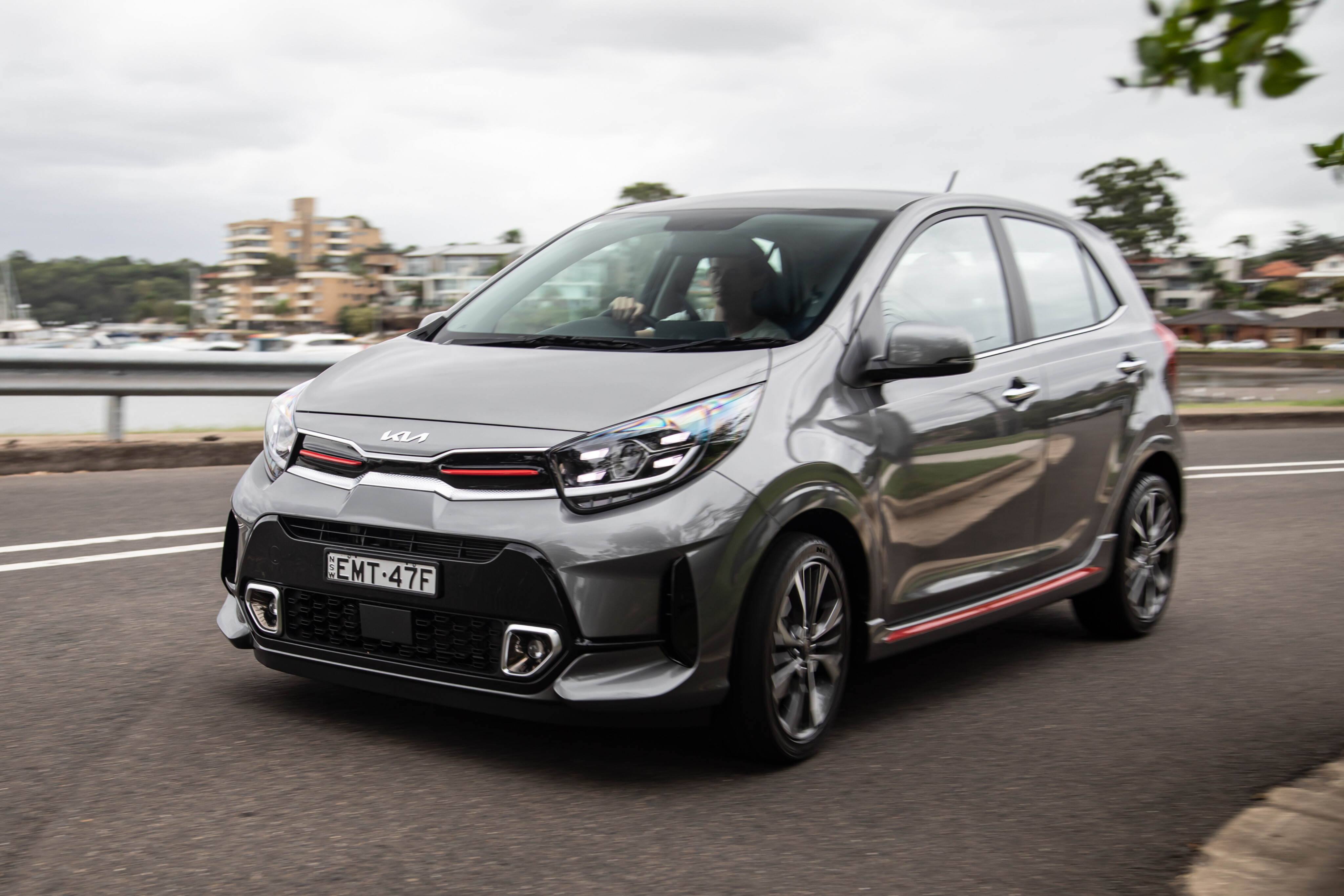
Score breakdown
Things we like
- Accessible, low-risk fun
- Space efficiency
- Zippy turbo-petrol engine
Not so much
- GT is manual only
- Four-star ANCAP rating
- Not as cheap as it was
Half a decade ago when it launched, the Kia Picanto GT wasn’t anything particularly special. Australia’s car market is a much more complex place than it was in 2017, though, with SUVs growing their market share by a whopping 15 per cent in that time.
Sure, adding efficient hybrid powertrains to big seven-seat SUVs (that rarely have more than two passengers on board) and electrifying utes (using 229kWh batteries) helps, but in a world in desperate need of help, the ‘bigger is better’ attitude feels out of step. The real solution is downsizing and simplifying.
The Picanto is a case in point, built to a tried-and-true city car recipe: five doors, a decent boot, enough cabin space and torsion beam rear suspension, squeezed into a compact 3.6-metre length. The tested GT spices things up with a turbo-petrol engine and firmer chassis while retaining an efficient 5.2L/100km ADR combined economy rating.
In 2023, the Picanto GT’s points of difference are what made it so normal at launch: compact size and space efficiency. And yet, when the micro hatch is updated next year the GT will be dropped – was that a good planning move?

JUMP AHEAD
- How much is it, and what do you get?
- How do rivals compare on value?
- Interior comfort, space and storage
- What is it like to drive?
- How much fuel does it use?
- How safe is it?
- Warranty and running costs
- VERDICT
- Specifications
How much is it, and what do you get?
For its nationally recognised $22,890 drive-away price, the Picanto GT represents sharp value in today’s market full of expensive crossovers.
It’s equipped with an 8.0-inch touchscreen featuring DAB+ digital radio, wireless Apple CarPlay and Android Auto connectivity, with LED daytime running lights, halogen headlights and 16-inch alloy wheels as well as a sporty GT body kit to let the world know you bought the expensive Picanto.
One snag: it’s manual only. This is a shame because the five-speed stick shift will rule the peppy GT out for some buyers.
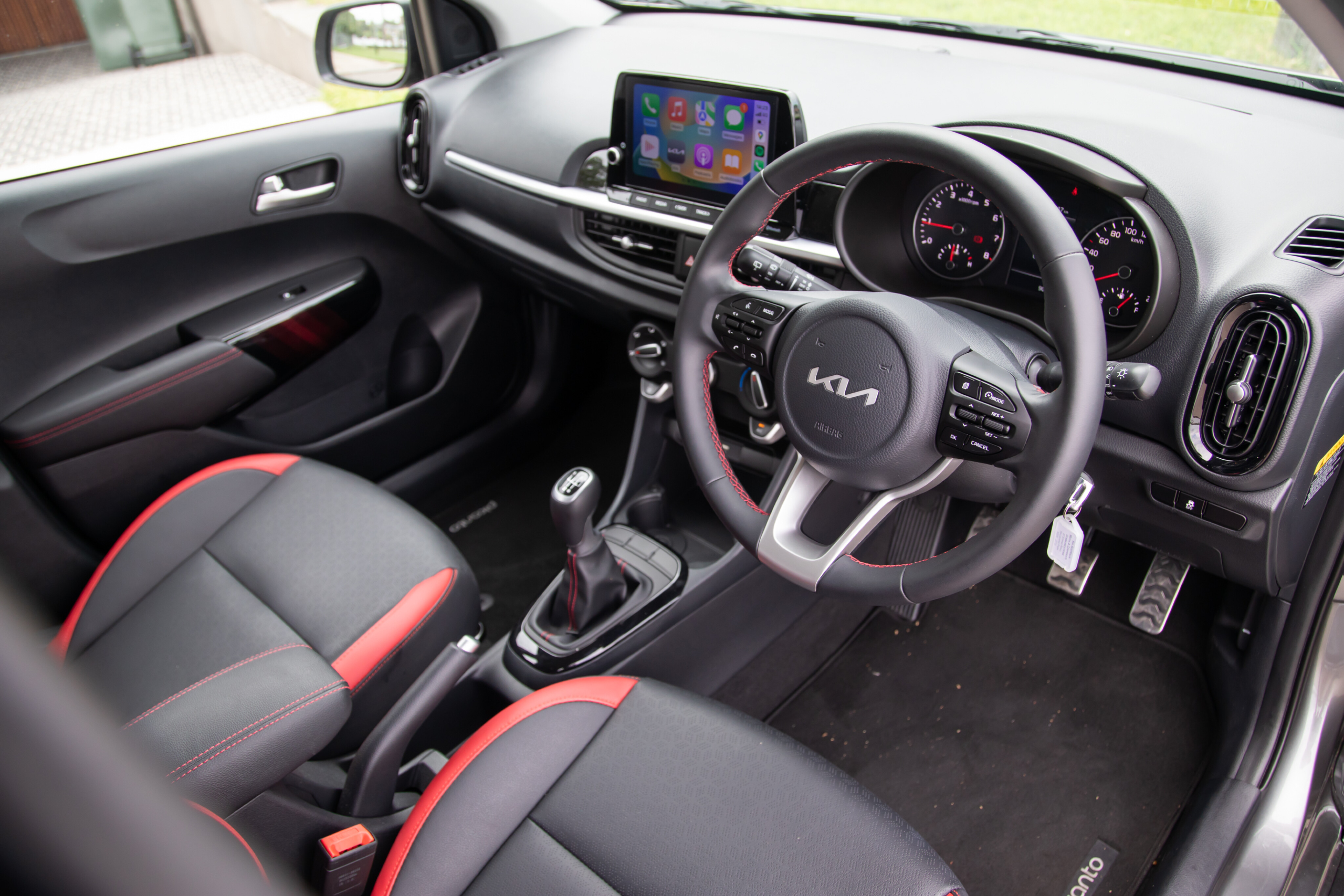
| 2023 Kia Picanto GT features | |
|---|---|
| Halogen headlights | 16-inch alloy wheels |
| GT body kit | Vinyl upholstery |
| Air conditioning | 4.2-inch TFT information display |
| 8.0-inch touchscreen | DAB+ digital radio |
| Wireless Apple CarPlay/Android Auto | Leather-appointed steering wheel |
| 4-speaker sound system | LED DRLs |
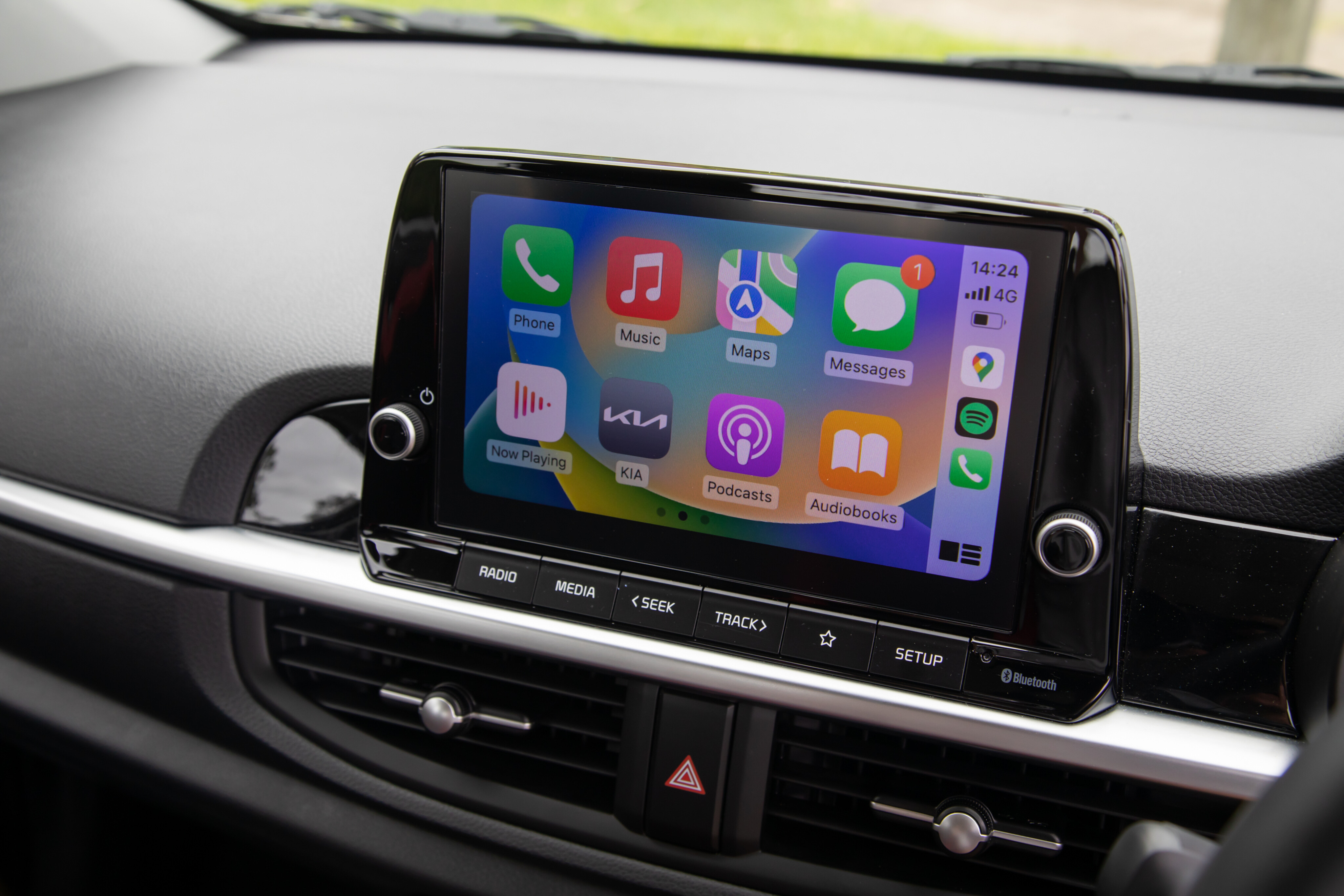
How do rivals compare on value?
Officially classified as a ‘micro’ car in Australia, the Picanto owns its segment with an 80+ per cent share month-on-month. Its only remaining rival is the 15-year-old Fiat 500.
As the Picanto is a relatively spacious five-door hatch, you could also consider a Hyundai Venue, Kia Rio, Mazda 2, MG 3, or Suzuki Swift. All are available in a similar price sphere, and if space and low price are what you crave, then these are better options – though none has the Picanto GT’s sporty spice.
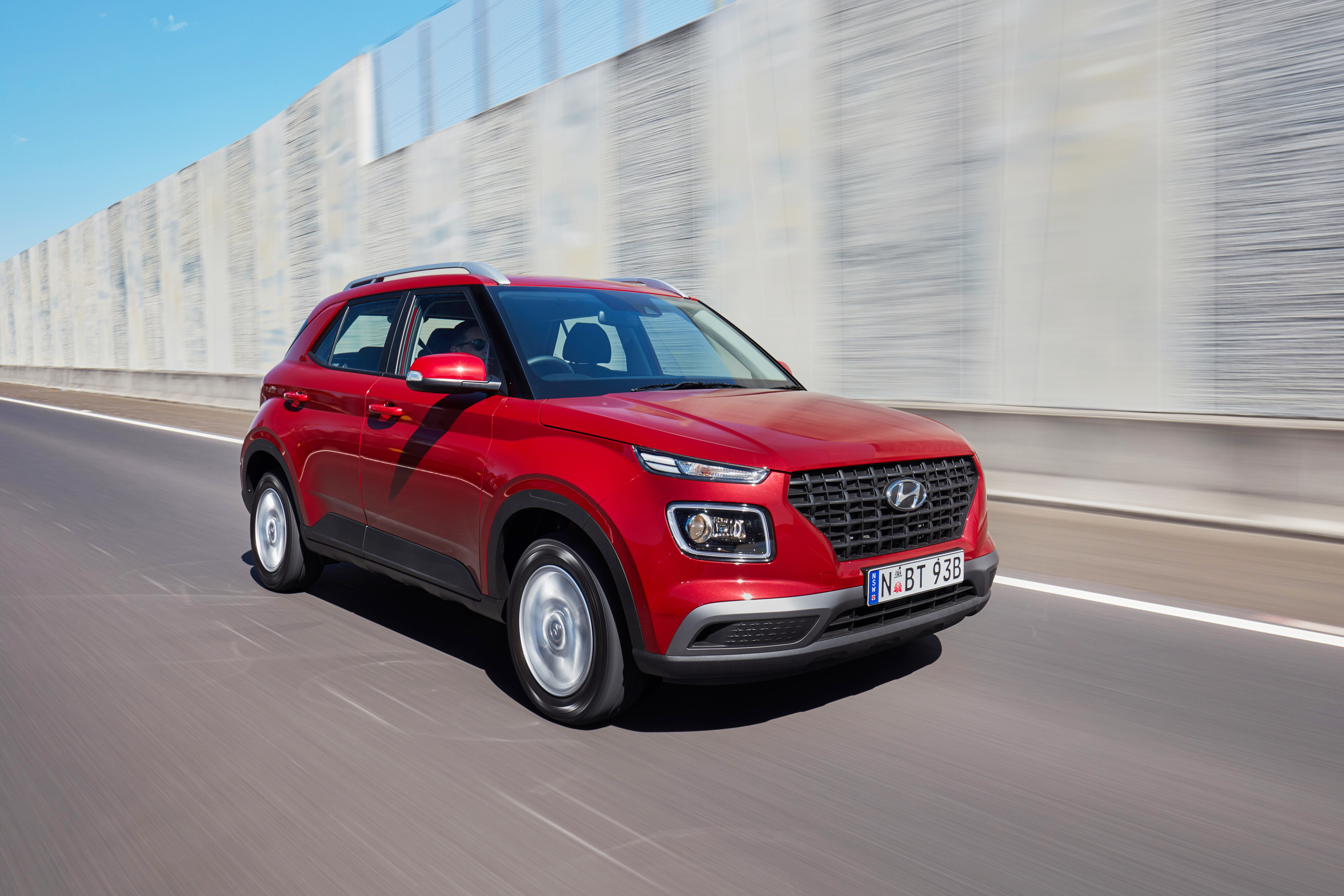
Interior comfort, space and storage
The leather-appointed steering wheel, racy red accents, and aluminium pedals give the Picanto GT a sporty edge inside.
It's not the height of taste but with a large glasshouse, the Picanto’s cabin is airy and – for the price – of respectable material quality.
Although not cutting edge, the Picanto’s white-on-black analogue dials are legible, and the 4.2-inch TFT screen provides helpful information including fuel economy, vehicle information and digital speed read-out.
The central 8.0-inch touchscreen is the highlight, offering sophisticated wireless smartphone mirroring for both Apple and Android products – something not even Kia’s most expensive EV6 GT matches. It worked faultlessly on our test, so it seems Kia has ironed out earlier gremlins.
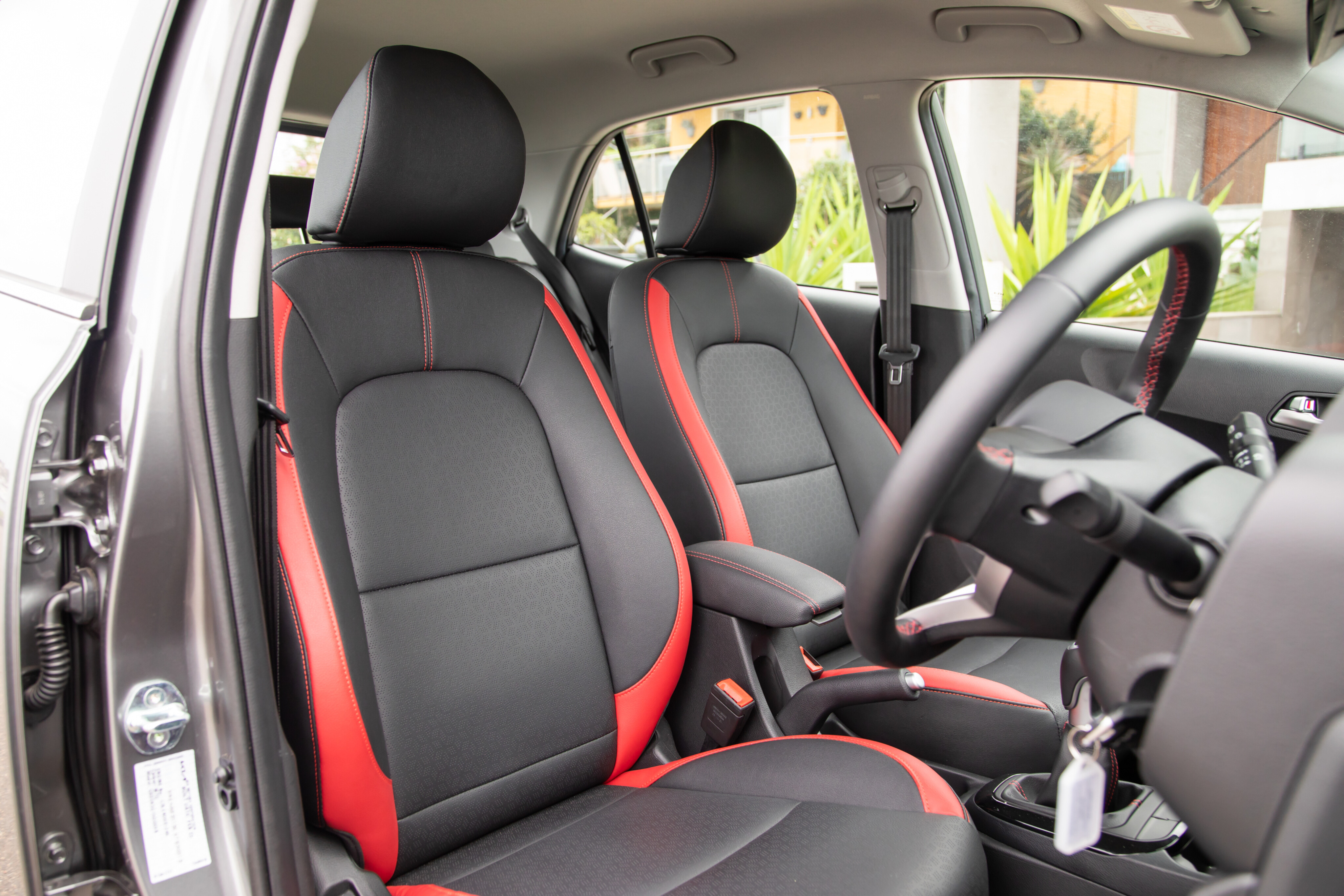
It lacks satellite navigation, so you have to rely on your phone’s applications for wayfinding. The four-speaker sound system is weak, but the inclusion of digital radio is welcome, and the Picanto's HVAC controls are pleasingly conventional.
If the Picanto GT struggles in any particular area, it’s the flat and unsupportive seats. The driving position is typically compromised, and the manual adjustment rudimentary. The black vinyl upholstery gets hot in the sun, too – we’d prefer cloth.
That compromised driving position does equate to a usable back seat. The rear quarters are still not great with no air vents, charging ports, armrest or space for six-foot-plus riders, but for most people, they’re more than adequate for short trips. In fact, the back of a Picanto GT is a comfier place than a physically larger Hyundai Venue.
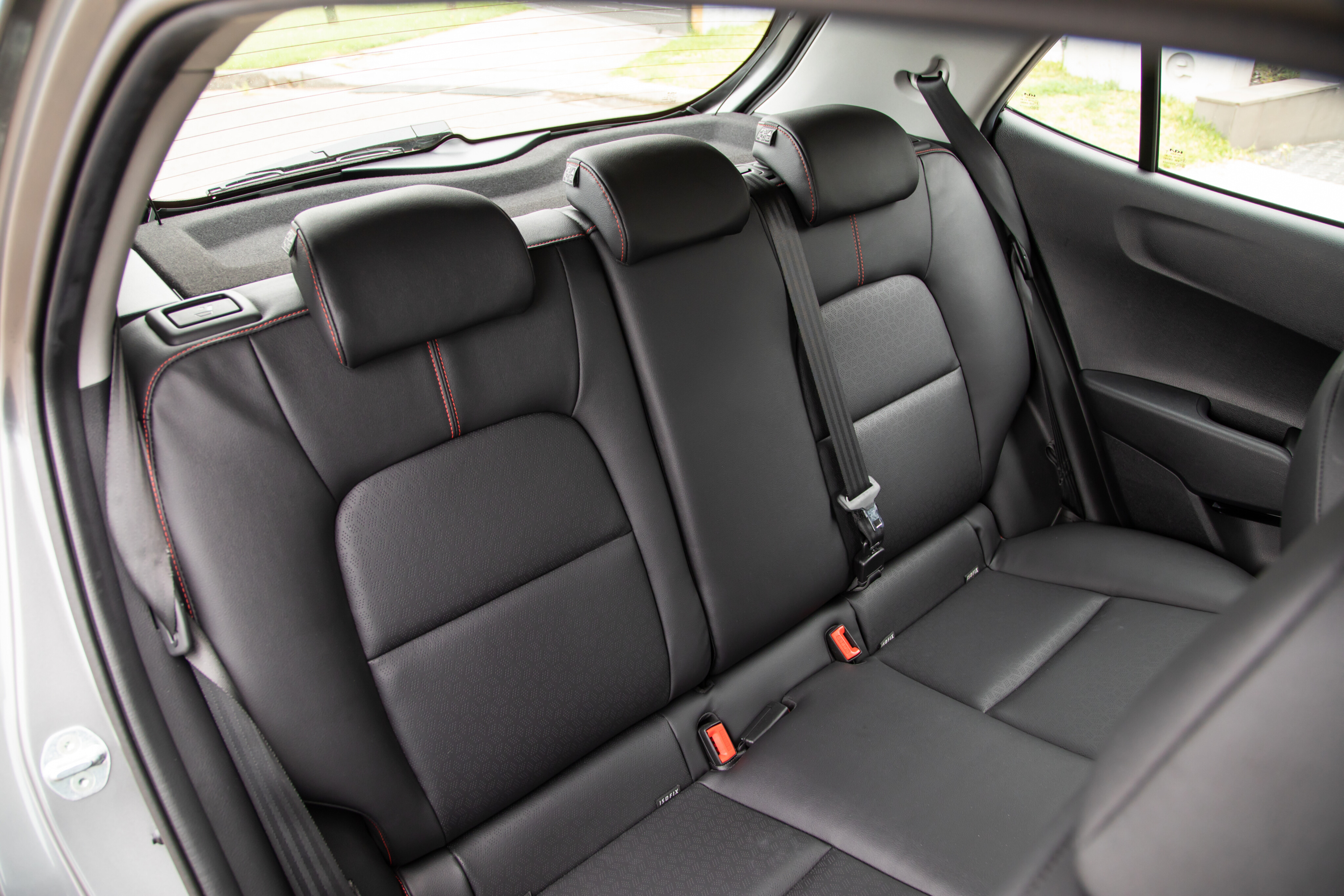
Storage in the Kia Picanto
Below the control stack, the Picanto has great incidental storage. There’s a tray for odds and ends with a mezzanine section above – perfect for smartphones – within easy reach of the included USB-A and 12-volt sockets. A central armrest provides a modest amount of covered storage, while the Picanto also features two cup holders and door bins that fit a 700ml bottle.
On paper, a 255L boot capacity appears rather small, but given the Picanto’s compact dimensions it’s very usable – bigger than a Toyota Corolla hatch (217L), and Kia has managed to squeeze a space-saver spare under the boot floor, too.
Don’t delude yourself that a family of four and luggage could do a week away in a Picanto, but for a couple, or trio, the space is adequate. With the rear seats folded, longer items including bicycles or flat-pack furniture can be stored in the little Picanto.
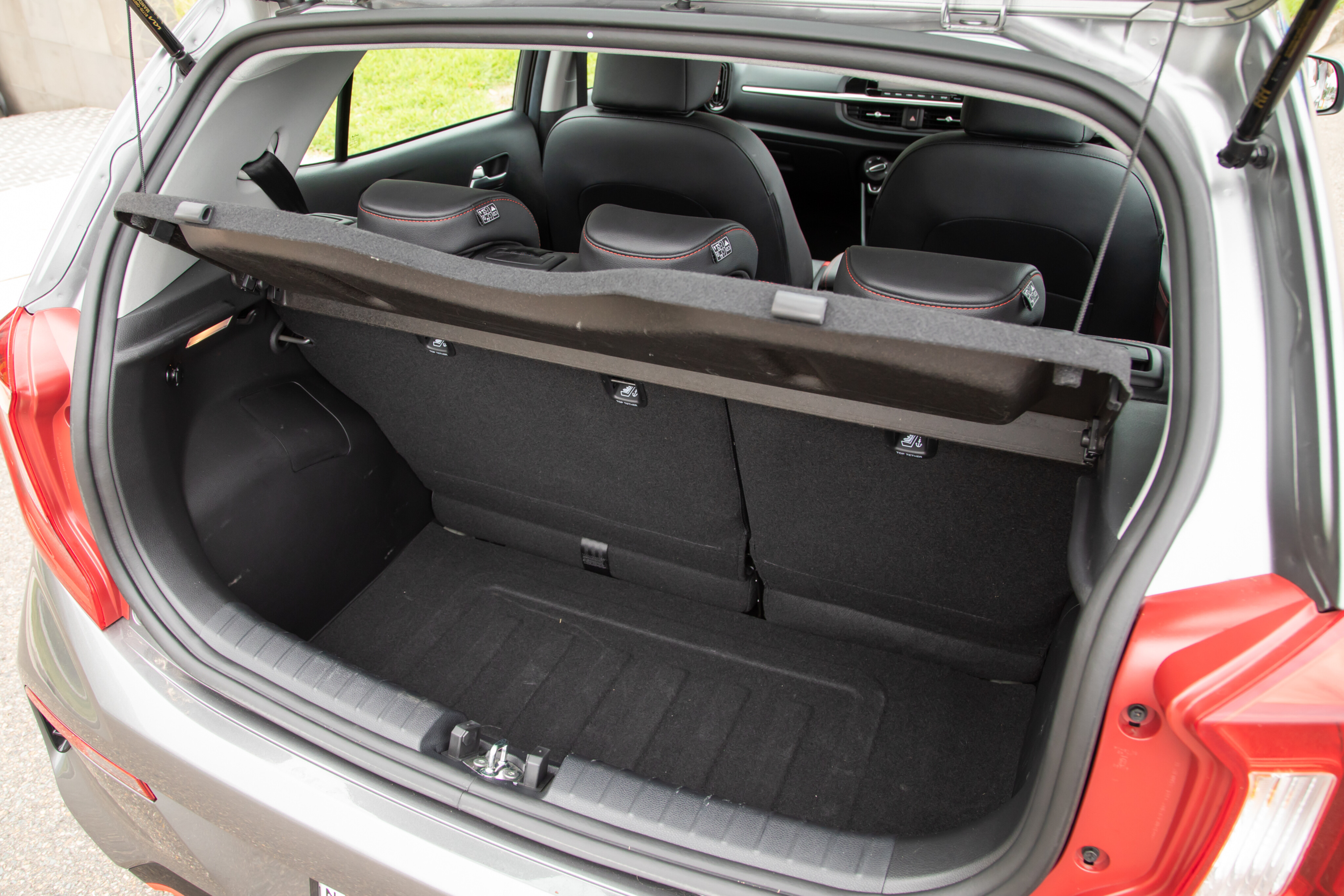
What is it like to drive?
It’s almost refreshing to pull a physical key fob from your pocket, press the little unlock symbol, get in, depress the clutch and brake then turn a key to start the Picanto GT.
The Picanto GT jumps into life and its 998cc turbo-petrol three-cylinder settles into an off-beat idle. It’s not a smooth or refined engine below 2500rpm but you don’t expect that from a three-banger.
Once you have some revs on the dial the motor’s operation is smoother, but it’s no peach. Although paltry on paper, the Picanto’s 172Nm is available between 1500-4000rpm so – assisted by a lithe 1012kg kerb weight – the GT feels plenty nippy around town in second and third gears. Not much point in taking the needle to redline, though, as the mighty 74kW peak comes at just 4500rpm.

The Picanto GT’s five-speed manual has a long and light throw with an easy (if numb) clutch pedal, so it’s an easy ’box around town, but there’s no automatic to broaden appeal. And that’s a shame because the asthmatic 62kW/122Nm 1.2-litre petrol four-banger and four-speed slushbox pairing in the GT-Line automatic is not inspiring.
Driving the Picanto GT on the freeway using cruise control, its flexible three-pot means you can leave the shifter in fifth as you tango with tempo changes in traffic. Above 100km/h, though, the tyre roar and engine noise crescendo to a level that the four-speaker sound system can’t overcome.
With narrow tracks, a short wheelbase and tall stature, the Picanto GT can be a tiring partner on the freeway as it bobbles over bumps and you’re forced to bicker with crosswinds. It’s very at home in town though; visibility is an underrated trait in cars (with blind-spot monitoring and reverse cameras it’s almost been forgotten), and the Picanto’s fishbowl glasshouse makes it wieldy and supremely easy to park.
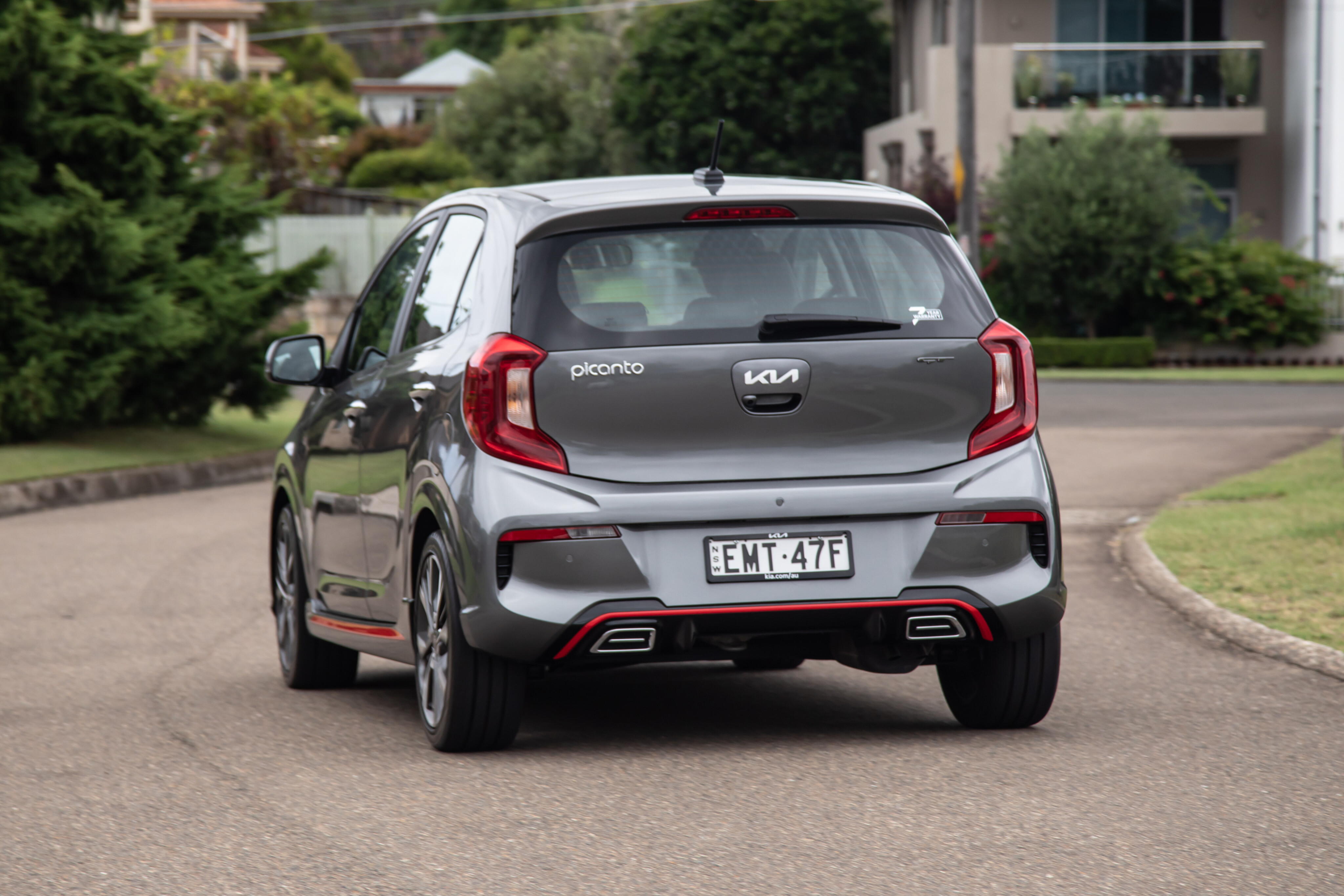
The GT’s ride can be choppy over speed humps and expansion joints, especially the rear end (I wouldn’t want to travel in the back seat for too long).
Above 50km/h the Picanto’s bobbing calms down and, for such a small car, there’s little noise from the front struts or rear torsion beam, though there were persistent rattles from the passenger’s A-Pillar trim and dash in our test vehicle.
Along testing twisty roads, the Picanto doesn’t roll as much as you might expect and the front end is pretty pointy initially, with encouraging off-throttle adjustability available. The average 195/45R16 Nexen NBlue tyres don’t have anywhere near enough bite to lean on the front end properly. A grippier set of boots would help address the front-end-limited handling.
The Picanto GT’s chassis is not as talented or nuanced as a true hot hatch, like the Renault Clio Sport (2001-2006). That said, with the Picanto’s petite proportions and eager handling it’s plenty more rewarding to drive than an equivalently priced SUV.
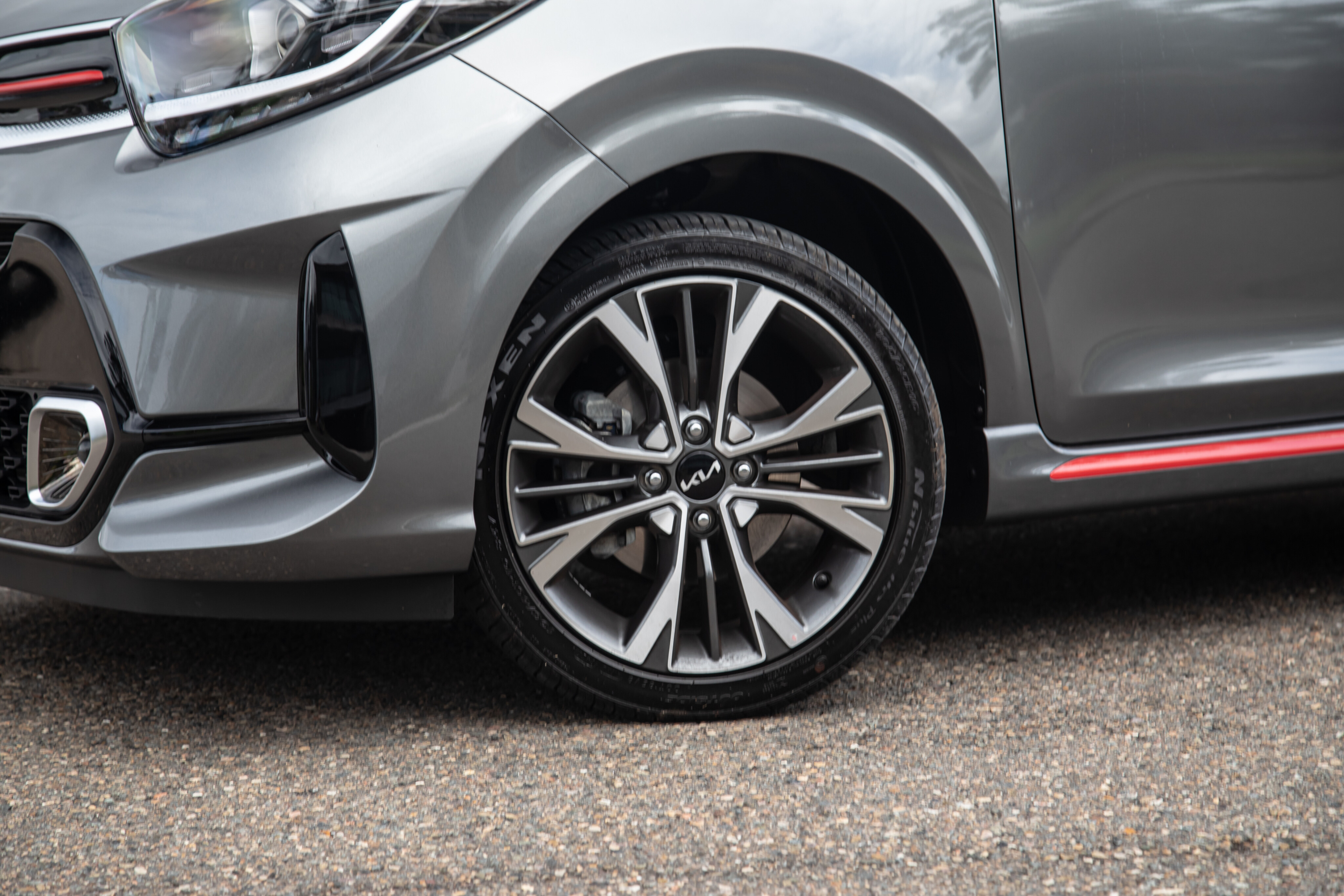
How much fuel does it use?
The Kia Picanto GT uses 5.2L/100km on the combined ADR fuel efficiency cycle.
In a rare occurrence, we managed to match that figure exactly, on our three-hour test loop.
Continuing over a week of testing with more urban and suburban driving, that number climbed to 6.1L/100km, which is still very reasonable for an engaging hatchback.
The Picanto GT will accept regular 91 RON unleaded petrol or an E10 blend at the bowser and features a rather dinky 35-litre fuel tank.

How safe is it?
The Kia Picanto was awarded four stars in 2017 ANCAP safety testing.
The Picanto is equipped with autonomous emergency braking and forward collision warning, but the camera-based system is unable to accurately detect pedestrians, cyclists, or crossing traffic.
A reversing camera, rear parking sensors, stability control, and six airbags round out the Picanto’s list of safety features. It scored 87 per cent in adult occupant protection, 64 per cent in child occupant protection, 54 per cent in pedestrian protection and 47 per cent for safety assist systems.

Warranty and running costs
Kia’s seven-year, unlimited-kilometre warranty is still one of the most complete new-car guarantees in Australia, and it covers the Picanto GT.
Maintenance is due every 12 months or 10,000km, and Kia caps service costs for seven years or 70,000km. Five years will cost you $1957, and seven years $3158.
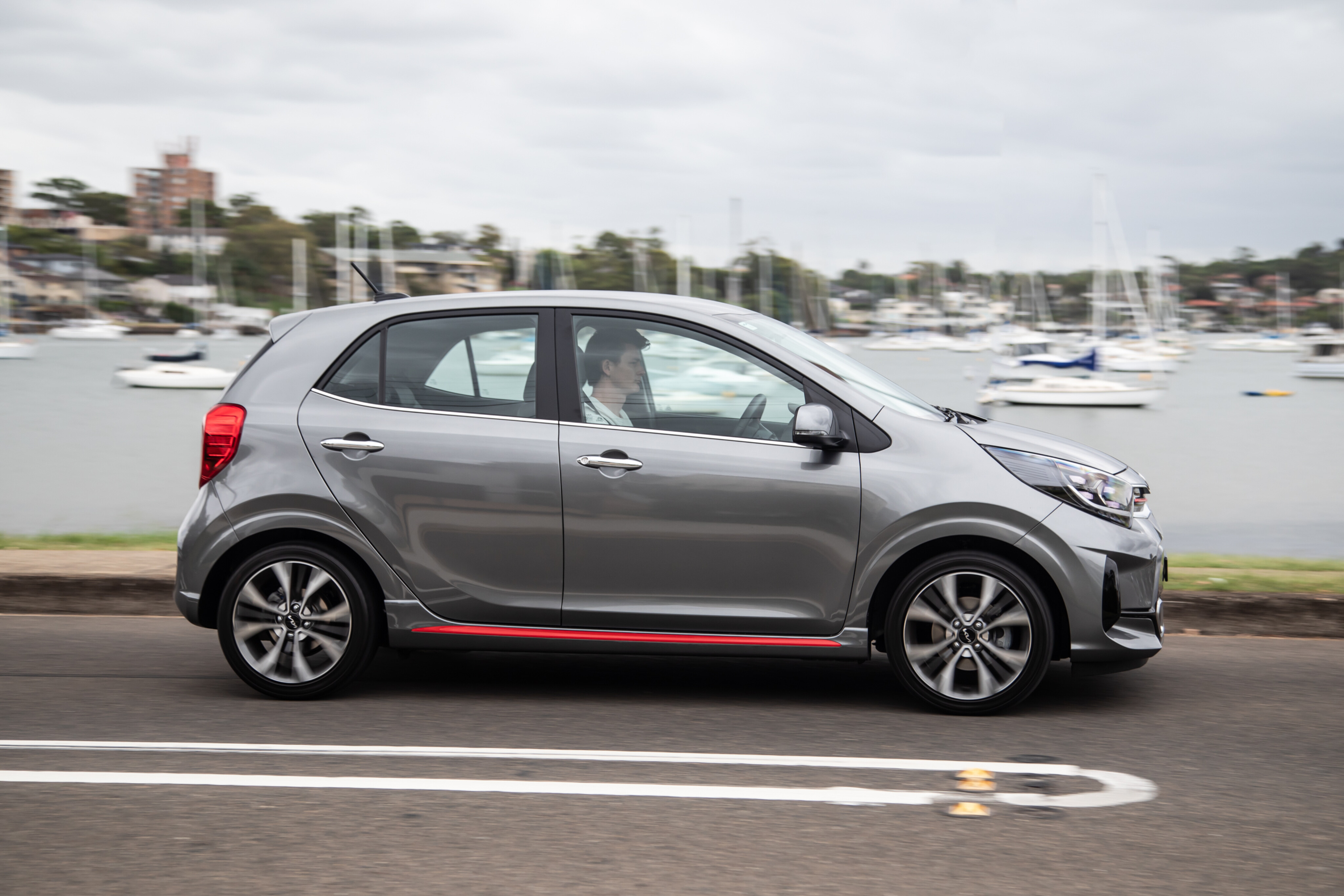
VERDICT
While it’s no Peugeot 205 GTi, Renault Clio Sport, or Volkswagen Golf GTI, the Picanto GT is a bucket load more fun than other cars in its price range.
That peppy three-cylinder is brisk and alert, and the gruff sound adds more personality than terseness (just). It’s fun, and eggs you on to drive the snot out of the Picanto everywhere you can.
A few question marks remain, such as its four-star ANCAP rating, lack of adaptive cruise control, and the fact it’s manual only.
But the Picanto GT is cheap, well-packaged, and a lot more efficient in the real world than an equivalent SUV and driving one again makes us question why Kia's dropped it for the 2024 update.
If you’re looking at a Hyundai Venue or Kia Stonic, do yourself a favour and sample the Picanto. It might not look as cool, but it’s a better car.
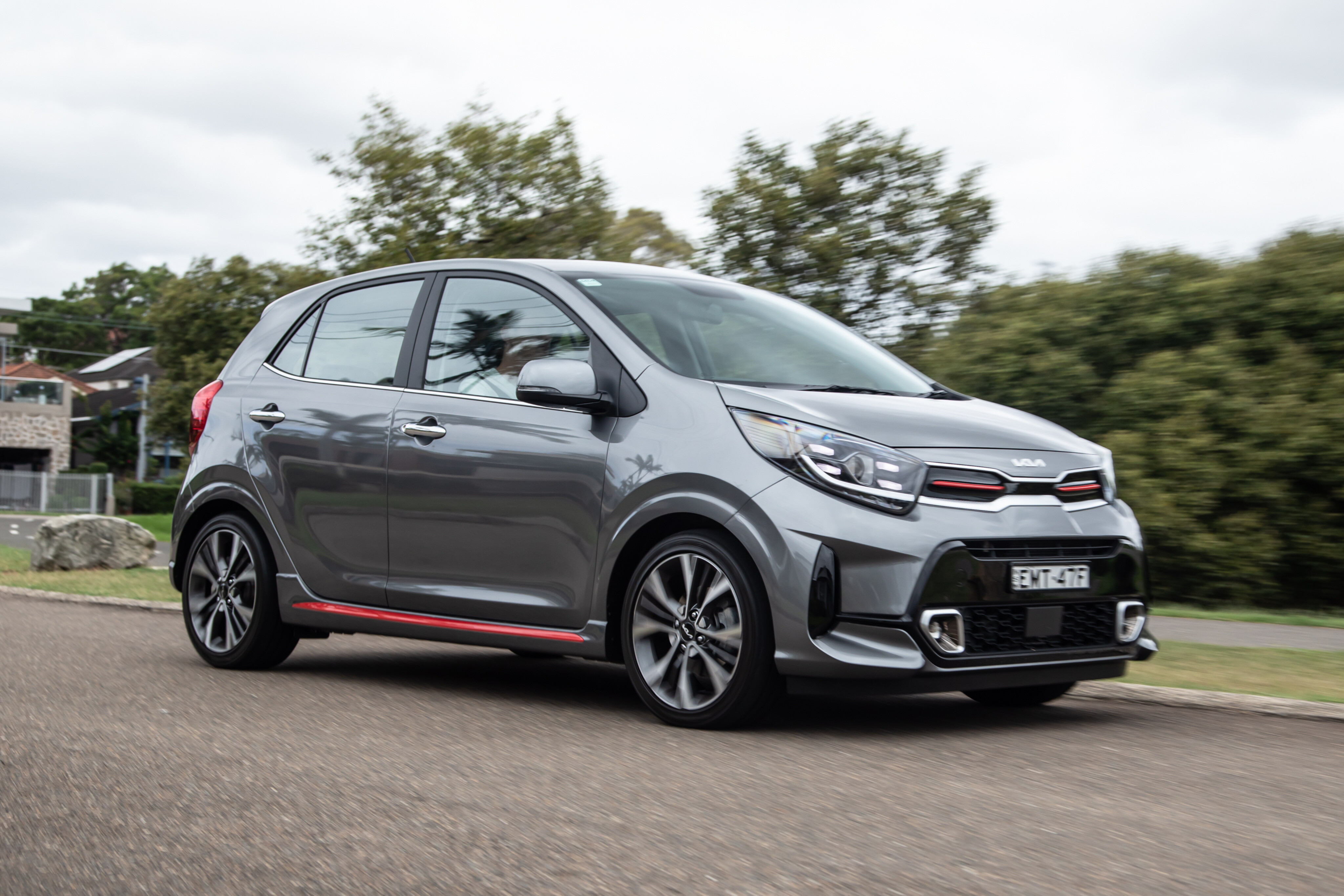
| 2023 Kia Picanto GT specifications | |
|---|---|
| Price | $22,890 drive-away |
| DRIVETRAIN | |
| Engine | inline 3 cyl, DOHC, direct-injected, CVVT, 12v, 998cc turbo-petrol |
| Layout | front engine, transverse, FWD |
| Power | 74kW @ 4500rpm |
| Torque | 172Nm @ 1500-4000rpm |
| Gearbox | 5-speed manual |
| CHASSIS | |
| L/W/H/W–B | 3595/1595/1485/2400mm |
| Weight (claimed) | 1012kg |
| Boot | 255L |
| Fuel/tank | E10 or 91 RON / 35L |
| Economy (tested) | 5.2L/100km |
| Suspension | Front: struts, stabiliser bar. Rear: coupled torsion beam |
| Steering | rack-assisted electric power steering |
| Front brakes | 256mm ventilated rotors, single-piston floating caliper |
| Rear brakes | 234mm colid rotors, single-piston floating calliper |
| Tyres | Nexen N Blue |
| Tyre size | 195/45R16 |
| SAFETY | |
| ANCAP rating | 4 stars (2017) |
| 0-100km/h | 10.5 seconds (estimated) |
Score breakdown
Things we like
- Accessible, low-risk fun
- Space efficiency
- Zippy turbo-petrol engine
Not so much
- GT is manual only
- Four-star ANCAP rating
- Not as cheap as it was
COMMENTS